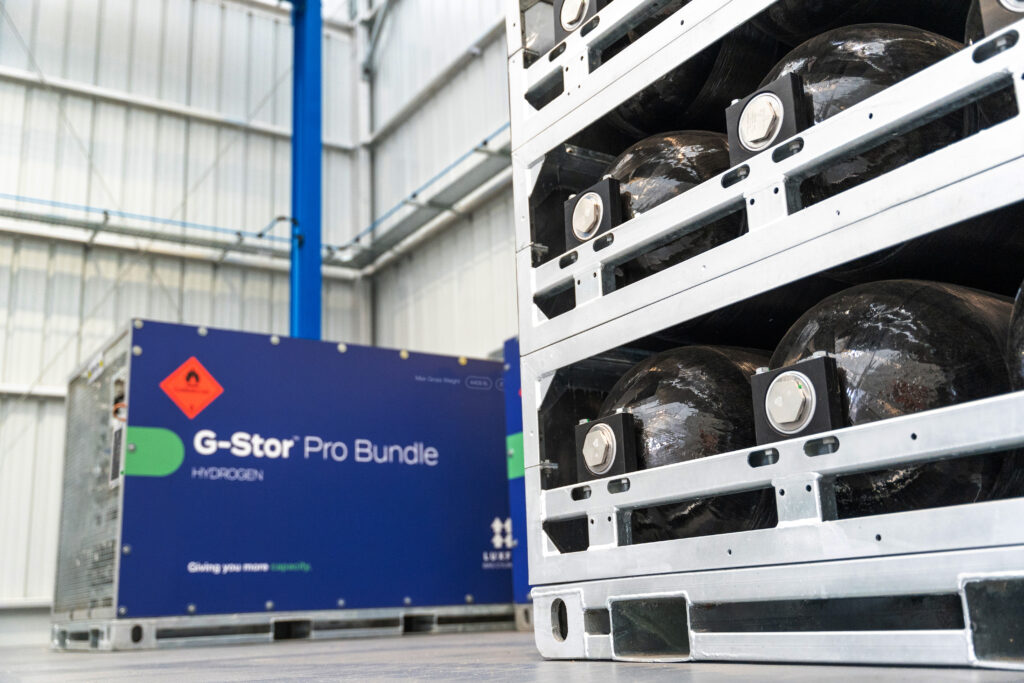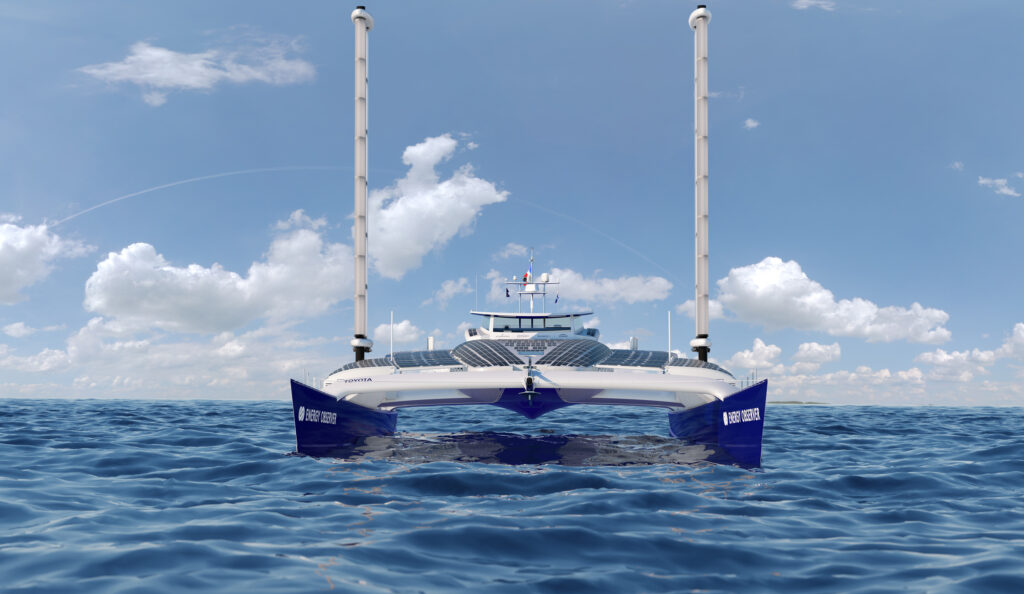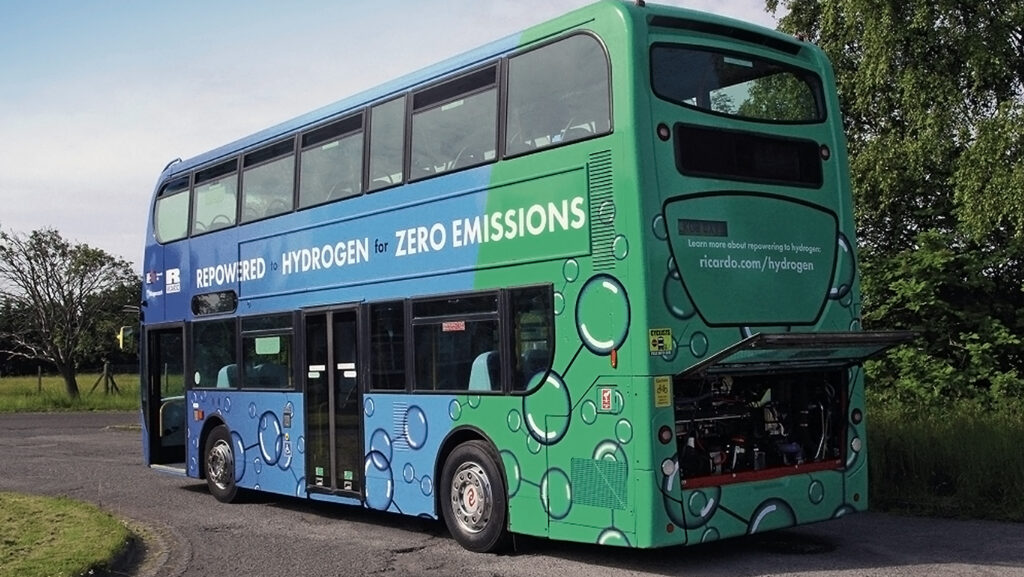US +1800 764 0366 | Europe & Middle East +44 (0)115 980 3800 | Asia-Pacific: +61 2 7227 5369
News:
Solving hydrogen challenges with bulk gas transport and storage
Technical Engineering Manager Alex Millward highlights the need for bulk gas transport and storage solutions.
Hydrogen transport and storage are fundamental components in the widespread adoption of hydrogen as a clean energy source. Efficient, safe, and cost-effective bulk gas transport and storage solutions are fundamental for balancing supply and demand, facilitating use in remote locations, and ensuring seasonal energy security. This is particularly vital as renewable energy generation fluctuates throughout the year. One of the key challenges in hydrogen distribution is ensuring reliable bulk gas transport solutions that can efficiently deliver hydrogen from production sites to end users.
The UK’s Hydrogen Transport and Storage Networks Pathway highlights the importance of storage and distribution in achieving the country’s hydrogen production targets by 2030. By linking producers with end users and addressing supply-demand mismatches, an advanced infrastructure will be key to scaling up the hydrogen economy. A critical element in this infrastructure is bulk gas transport, which enables the movement of large quantities of hydrogen efficiently and safely.
It’s a burgeoning market, and one which Luxfer Gas Cylinders has been pioneering for over two decades, with organisations worldwide collaborating with our alternative fuel experts.
Means for storing hydrogenCurrently, large-scale hydrogen storage is primarily achieved through underground salt caverns in geologically suitable locations. The UK has an existing 0.025 TWh capacity in salt caverns, with significant projects such as HyKeuper in the northwest and Aldbrough near the Humber set to add a further 1.3 TWh and 0.5 TWh, respectively.
However, these storage solutions require long development timelines. Despite the UK’s suitable geology, there is limited capacity for salt cavern expansion. Additionally, their geographic locations do not always align with demand centres, creating logistical challenges.
Of course, hydrogen can also be stored in liquid or solid state. Liquid hydrogen storage involves cooling it to cryogenic temperatures, significantly increasing storage density. While effective, this method demands high energy input for cooling and maintaining low temperatures, making it most viable for specialised applications like aerospace.
Alternatively, hydrogen can be stored by chemically binding it to metal hydrides or adsorbing it onto high-surface-area materials. While promising, these solid-state technologies remain in early stages and are currently more costly than conventional storage methods. The most practical and widely used approach today is compressed gas storage. This relatively mature technology is adaptable to various applications, including industrial processes and transportation, making it the preferred solution in the current hydrogen landscape.
Challenges in hydrogen storageDespite ongoing advancements, hydrogen storage presents several challenges that must be addressed for large-scale adoption.
One of the major challenges is hydrogen’s low energy density per unit volume, which makes it difficult to store in compact spaces. Even at high pressures or cryogenic temperatures, large volumes are required to store significant amounts of hydrogen, making storage density a persistent issue.
In addition, the UK’s storage and distribution infrastructure for hydrogen is still in its infancy. The development of large-scale storage facilities, pipelines, and refuelling stations requires substantial investment, which poses a barrier to the rapid expansion of hydrogen technologies. Cost-efficient storage solutions will be critical in making hydrogen a competitive energy source.
Sustainability is another consideration, particularly regarding the production and disposal of storage systems. High-pressure cylinders often rely on resource-intensive materials such as carbon fibre and complex manufacturing processes. Advances in sustainable material sourcing and recycling will be necessary to mitigate environmental impacts.
Finally, safe storage is paramount. As a highly flammable, low-molecular-weight gas, hydrogen requires rigorous handling and storage protocols. Its small molecular size makes it prone to leakage, necessitating advanced sealing technologies and robust leak detection systems.
For compressed storage, high-pressure cylinders undergo stringent testing to ensure safety and durability. This includes extreme temperature assessments, impact resistance tests, gunfire exposure trials, fatigue cycle evaluations, and burst testing. Manufacturers such as Luxfer prioritise these safety considerations, exceeding regulatory standards to provide market-leading hydrogen storage solutions. Notably, our company was among the first to secure approval for Regulation No R134, a global standard which certifies that cylinders are safe for use in hydrogen-powered vehicles across a wide range of applications – a requirement not all cylinders meet.
The advantages of multiple cylinder packagesTo bridge the gap between hydrogen supply and demand, a robust storage and bulk gas transport network is essential. While underground caverns and pipelines will play a role in the long term, these solutions will take years to develop. Even when in place, many end users will remain beyond the reach of fixed infrastructure, necessitating alternative hydrogen storage solutions.
For smaller-scale, flexible hydrogen storage and transport, high-pressure gas cylinder bundles – or multiple cylinder packages (MCPs) – provide a convenient and flexible storage solution. These interconnected, lightweight cylinders offer a space-efficient option for companies aiming to transition to greener energy but facing constraints due to limited infrastructure.
Consisting of interconnected, horizontally stacked lightweight cylinders, MCPs can store gas in a smaller footprint compared to other available options. A key benefit is they can be easily transported by truck or other vehicles to remote locations, where traditional power sources are not available.
They are also particularly practical and efficient in situations where hydrogen is required to be fed at a consistent flow rate and pressure without interruption. Additionally, MCPs reduce the need to manage cylinder stocks and eliminate time lost in cylinder changeover and handling, as well as reducing gas wastage. It means less potential for operations to be delayed or interrupted.
Tailored bulk gas transport bundlesThese bulk gas transport bundles can be tailored to meet the unique needs of different applications. The modular system is set in a lightweight, durable, high-strength frame that can be slotted into an existing structure and onto trucks and trailers seamlessly, making it a sound solution for transporting gases by road or rail. This mobility overcomes limitations imposed by pipeline infrastructure, crucially extending the reach of hydrogen. MCPs also provide on-site hydrogen storage, ensuring immediate access for industrial applications, backup power, and critical systems. By securing a dependable stock, businesses can maintain continuity and reduce downtime.
Scalable transport and storage solutionsAs hydrogen takes on a central role in the shift to a low-carbon economy, addressing storage challenges will be essential for enabling widespread, safe, and efficient adoption. Effective hydrogen storage is the backbone of an efficient hydrogen supply chain, and scalable solutions will be required to meet increasing demand.
Until a fully developed hydrogen storage and distribution network is established, industry leaders like Luxfer Gas Cylinders are stepping in to create practical solutions that bridge existing gaps. MCPs offer an immediate, flexible, and cost-effective means of hydrogen storage, catering to the evolving needs of the sector while accelerating the transition to clean energy.










